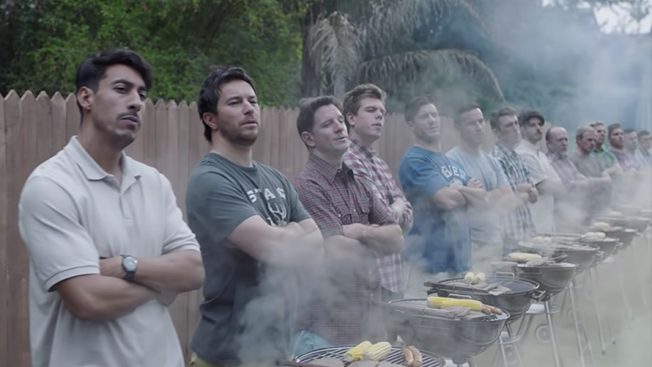Inspiration meets innovation at Brandweek, the ultimate marketing experience. Join industry luminaries, rising talent and strategic experts in Phoenix, Arizona this September 23–26 to assess challenges, develop solutions and create new pathways for growth. Register early to save.
You’ve no doubt already seen the furor around Gillette’s “We Believe: The Best Men Can Be” spot. Just a day into its release, and it’s attracted huge amounts of praise and criticism for its focus on bullying, the #MeToo movement and toxic masculinity.
In the wake of #MeToo, masculinity has become an explosive topic both within the ad industry and in the real world. And while there’s been a lot of talk in relation to promoting diversity and fairness in advertising over the last year, we’re now moving past this to the next stage in the advertising lifecycle: brands taking action.
Advertising and toxic masculinity
Advertising has played a significant part in the promotion of the hyper-masculine ideal, which in turn has contributed to the formation of what’s been dubbed toxic masculinity, the catch-all term for extreme gender performance in men. It covers traits like dominance, emotional unavailability and sexual aggression.
This problem has been thrust into the spotlight, and as we’ve seen from the social media reaction to “We Believe,” some see discussions on the subject as an attack on masculinity itself. Others have criticized the ad for focusing on ugly and negative stereotypical behaviors rather than promoting positives values. Some believe not enough is being done to combat toxic masculinity and want more brands to take a stance like this. And as a result, social media has become the stage for a new wave of gender warring.
The role of brands
What we’re facing is a frustrating moment for feminism and a confusing time for men. Alongside this, brands are trying to understand how masculinity should be portrayed in their marketing. One route leads to sanitized communications to avoid any type of generalization, while the other takes a firm stance that could throw your brand into the (often aggressive) fray.
Marketing does need to be dragged out of the ’80s and into a more inclusive discourse. Perhaps the best role for most is one of stealthy mediation, promoting a message of inclusivity and a more complex, layered version of masculinity. Brands play a significant role here. As content producers, it’s their collective responsibility to focus on the similarities between the genders, not the differences, and to build on the multifaceted masculine realities instead of reductive and outdated ideals.
Brands need to take a more nuanced approach to target men in advertising, considering the roles that men play and diversifying the vision of masculinity offered. Muscled models and superheroes aren’t reflective of your everyday man; consider how mental health could be affected by impossible ideals. Muscularity doesn’t equal masculinity.
Taking a stand
If you decide to stand against toxic masculinity, be nuanced in your messaging. Most masculinity is not toxic, and many men feel attacked by the backlash. As we’ve seen, social media often becomes a battleground for this debate. Gillette is currently caught in the crossfire, which is perhaps where it intended to land, but it’s not for the faint-hearted. Brands need to prepare for the backlash; ignoring hateful comments won’t make them go away.
Finally, for brands who want to take a stand, purpose isn’t something you can just dip your toe into and test the waters; you’re either in or you’re out. Don’t stray in for the sake of try-hard political correctness. It has to be a credible part of your business strategy, not just a PR stunt. Commit to making a real difference or stay away from the conversation.








